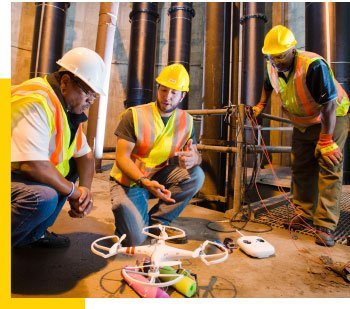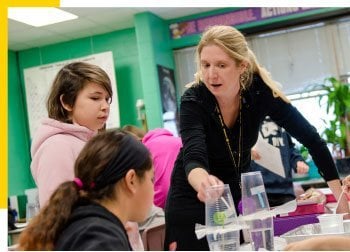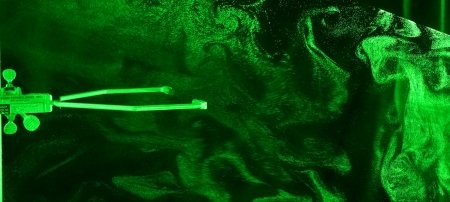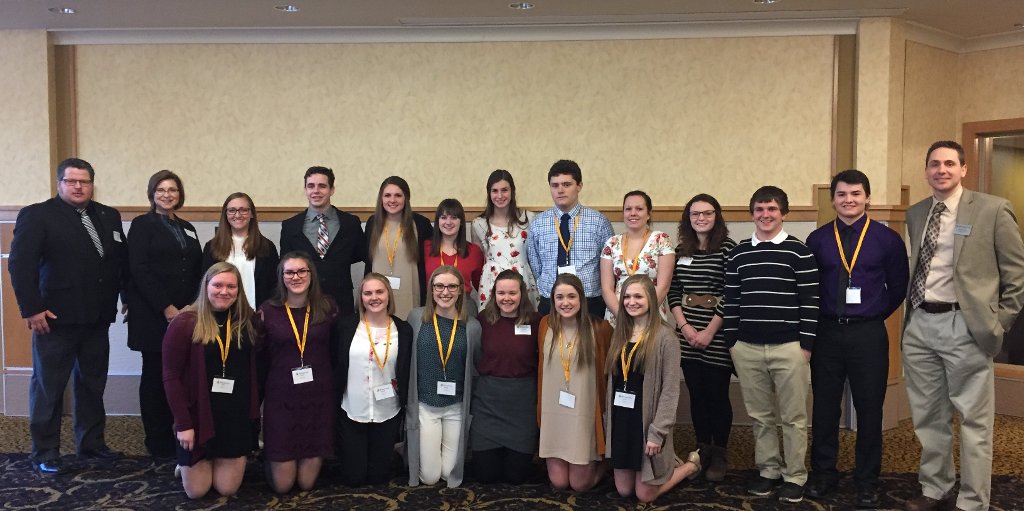Research in Brief: Environmental Finance Center, MTRI is 10, updates to 2016 stories.
Michigan Tech Research Institute is 10 Years Old
When the Michigan Tech Research Institute (MTRI) opened its doors in October 2006, who would have thought that:
- MTRI would grow from 24 employees to nearly 60.
- The institute would expand from 7,377 square feet to 17,697.
- Over 10 years, the research facility would generate $80 million in revenue.

When the Ann Arbor News announced the opening of MTRI with a headline proclaiming “There’s a new university in town,” who could have anticipated that:
- MTRI would become a pioneer in the application of technologically advanced, mathematically rigorous sensor and information technologies to critical environmental, infrastructure, automotive, and national security needs.
- More than 200 interns would get on-the-job training at MTRI to hone their classroom skills.
- The World Bank would look to MTRI and the Department of Geological and Mining Engineering and Sciences to help them gather and analyze data on the impact of geohazards for transportation—so they could protect their multi-million dollar investment in transportation infrastructure throughout South Asia.
MTRI collaborates broadly, with researchers at Michigan Tech’s main campus in Houghton, with federal agencies such as NASA, US Department of Transportation Federal Highway Administration, National Oceanic and Atmospheric Administration, Department of the Interior, Department of Defense, and the EPA, even internationally.
What’s hot at MTRI as the research institute enters its second decade? Here are a few examples:
- Autonomous vehicles—remote sensing, which is at the heart of MTRI research, will play a vital role in the development of autonomous vehicles, which are going to have to safely and effectively sense and respond to each other, road conditions, and innumerable other factors.
- Arctic research, including polar bear den detection and the National Aeronautics and Space Administration’s ABoVE (Arctic Boreal Vulnerability Experiment) project.
- Wildfire emissions and human health, expanding earlier research in San Diego County to the entire state of California.
- 4-D remote sensing, with the fourth dimension being time, a cooperative study with the Canadian Center for Remote Sensing.
- Noise in neonatal intensive care units, to determine how the level and type of ambient sound impacts the sleep of at-risk newborns.
- Drive-by and fly-by monitoring of bridge conditions with sensors that can be driven over the bridge in a car or truck, or flown over in a drone.
- Water erosion prediction using a new open-source modeling interface for WEPP and our online erosion modeling database.
- Waveform design for dynamic spectrum utilization, allowing radar and communication systems to co-exist in crowded spectrum.
- Enhancing soldier security by sensing buried explosive hazards.
“MTRI being part of Michigan Tech has been and continues to be a wonderful and productive experience. The University has a great leadership team who routinely provide insight and encouragement,” says Robert Shuchman, co-director. “MTRI researchers have collaborated with experts on campus to address pressing problems facing our nation. As we move forward to our next 10 years and beyond as part of the Michigan Tech family, MTRI will continue our collaborations and form additional partnerships with our campus friends and colleagues.”
Updates to 2016 Research Stories
Mi-STAR
The 2016 Research magazine highlighted the Michigan Science Teaching and Assessment Reform (Mi-STAR), a new science curriculum for middle school students that emphasizes applying science to real-world problems. Since then, progress on the program has continued.

Mi-STAR piloted three curriculum units in Michigan classrooms in fall 2016.
- Number of teachers piloting the units: 16
- Total number of students in all the classes where the units are being piloted: 1,679
- Number of school districts where piloting is taking place: Six
- Spring 2017: Three more curriculum units will be tested in classrooms
Revisions to Mi-STAR curriculum based on the results of the pilot testing:
- The individual curriculum unit is being tested on a broader scale
- Some changes were made to the curriculum design process which will improve the design of curriculum units that are developed in the future
The scope of the project remains the same—to achieve the vision of providing Michigan teachers with high quality, low cost educational curriculum for the middle grades (sixth, seventh, and eighth) and teacher professional development as well. Work to take Mi-STAR to other states has also started.
Cloudy Details
Professor of Physics Raymond Shaw’s cloud research continues to expand. Featured in the 2016 edition of Research for his airborne lab, Shaw is now getting attention for work he’s conducting in Michigan Tech’s cloud chamber.
What makes the Michigan Tech chamber different from any other is that the cloud inside is turbulent. Researchers can keep a cloud for as long as they want, so long as they keep feeding it aerosols. Every cloud droplet in Earth’s atmosphere forms on a preexisting aerosol particle, and experimenting with aerosol levels within the cloud chamber has led to an exciting discovery.
In a study published in Proceedings of the National Academy of Sciences, Shaw, fellow Professor of Physics Will Cantrell, graduate student Kamal Kant Chandrakar, and colleagues found that clouds with fewer aerosols have a wider variability in droplet size, making it easier for them to produce rain. This finding could have serious implications for weather and climate change.
Portage Health Foundation
Last year, Michigan Tech’s important new partnership with the Portage Health Foundation (PHF) was featured. Here are key highlights from 2016:
- Pavlis Honors College awarded 11 Undergraduate Research Internship Program (URIP) scholarships.
- Robert Larson was one of the first recipients of a Portage Health Foundation graduate assistantship that enabled him to focus on finishing requirements for his doctorate in biological sciences. Now he is a Lundbeck Postdoctoral Research Fellow, sponsored by the American Autonomic Society.
- $8,000 PHF Making a Difference scholarships were awarded to Adison Cook, Elisha Houle, Corey Miller, and Abby Sutherland. They are establishing a new collegiate HOSA-Future Health Professionals model and chapter at Michigan Tech. Members will help to prepare high school students for a variety of health-related degree programs.
- Biomedical engineer Keat Ghee Ong was named the Portage Health Foundation Endowed Professor of Technological Innovations in Health.
Michigan Technological University is an R1 public research university founded in 1885 in Houghton, and is home to nearly 7,500 students from more than 60 countries around the world. Consistently ranked among the best universities in the country for return on investment, Michigan's flagship technological university offers more than 185 undergraduate and graduate degree programs in science and technology, engineering, computing, forestry, business, health professions, humanities, mathematics, social sciences, and the arts. The rural campus is situated just miles from Lake Superior in Michigan's Upper Peninsula, offering year-round opportunities for outdoor adventure.




